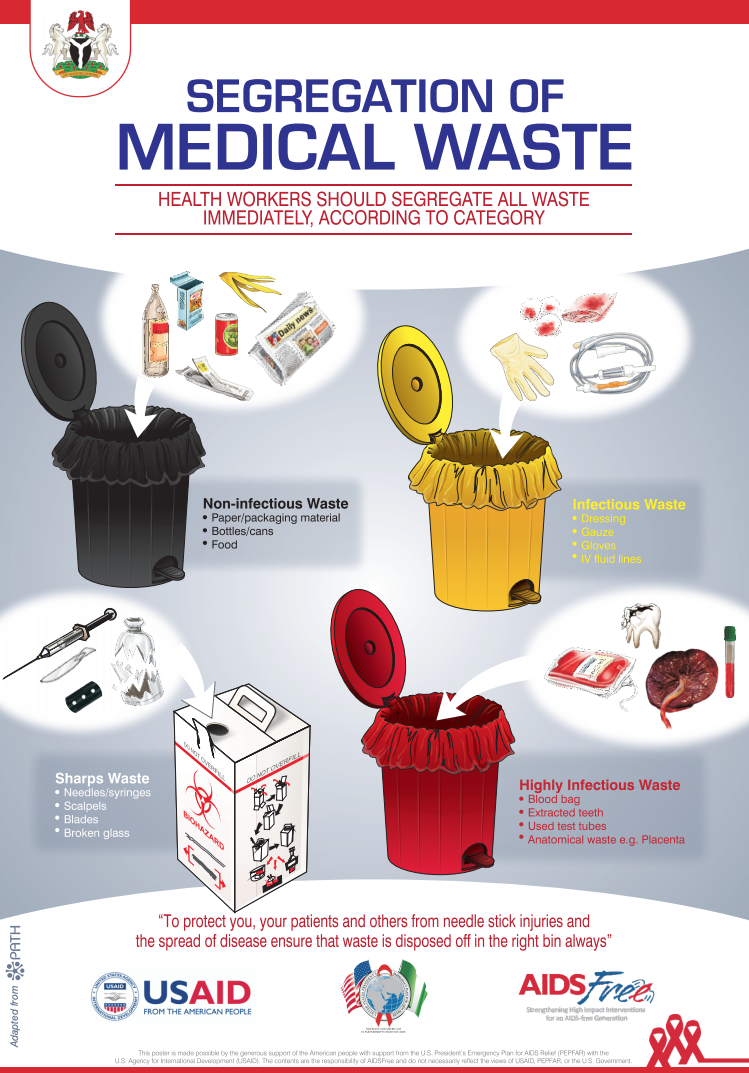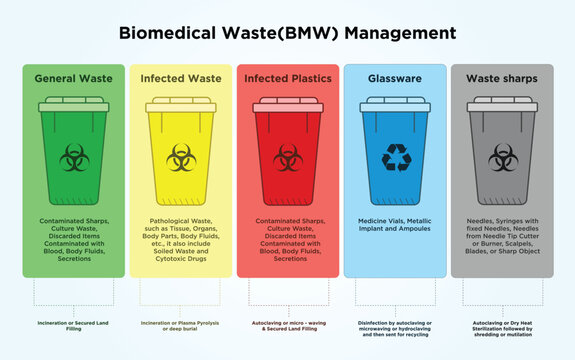Complete Medical Waste Removal Service: Seamless Disposal for Health Care Facilities
Wiki Article
Conformity and Rules for Medical Waste Disposal
Conformity and regulations for clinical garbage disposal play an essential role in guaranteeing the security and health of both health care professionals and the public. Proper administration of clinical waste is necessary to protect against the spread of infections, safeguard the atmosphere, and keep public health. This requires adherence to particular standards and procedures stated by governing companies and bodies. These policies include numerous aspects, including the category and partition of clinical waste, correct storage space and managing procedures, in addition to transportation and disposal techniques. By complying with these laws, health care facilities can decrease the threat of contamination and potential damage to people and the environment. This short article will discover the importance of conformity and provide an overview of the vital laws controling medical waste disposal.Relevance of Conformity
The relevance of conformity with laws for clinical garbage disposal can not be overemphasized. Appropriate disposal of clinical waste is essential for making sure the security and health of health care employees, individuals, and the general public. Clinical waste, which includes things such as utilized needles, infected gloves, and biomedical waste, can present serious health dangers otherwise managed and disposed of effectively.Compliance with guidelines makes sure that clinical waste is taken care of in such a way that reduces the potential for exposure to transmittable conditions and hazardous materials - medical waste removal. It helps prevent the spread of infections, such as HIV, liver disease B and C, and various other bloodborne pathogens. Conformity additionally plays an important duty in safeguarding the environment by protecting against contamination of water resources, dirt, and air
Failing to abide by guidelines can cause serious consequences for health care centers, consisting of penalties, lawsuit, and damages to their reputation. Additionally, non-compliance may jeopardize the health and wellness and safety of healthcare employees, individuals, and the community.
Compliance with laws for clinical garbage disposal needs adherence to specific standards and procedures. These may include appropriate segregation, product packaging, labeling, and storage of clinical waste. It also entails making use of approved disposal methods, such as autoclaving, landfilling, or incineration, relying on the type of waste.
Regulatory Agencies and Bodies
Regulative companies and bodies play a critical duty in overseeing compliance with guidelines for clinical waste disposal. These organizations are in charge of establishing standards, methods, and criteria to ensure the safe and correct handling of clinical waste. They keep an eye on and implement conformity to safeguard public health and the setting.One of the most prominent governing companies in the United States is the Epa (EPA) The EPA is in charge of managing the storage space, transportation, therapy, and disposal of clinical waste. They establish standards for waste generators, transporters, and therapy centers to follow, guaranteeing that all necessary safety measures are required to avoid the spread of illness and contamination.
Another vital regulative body is the Occupational Safety And Security and Wellness Administration (OSHA) OSHA establishes laws and standards to safeguard employees from job-related threats, consisting of those pertaining to medical waste. WasteX Medical Waste Disposal. They provide standards for the risk-free handling and disposal of clinical waste to shield workers in health care centers
In enhancement to these government companies, specific states additionally have their very own governing bodies that oversee clinical waste disposal. These companies might have their own particular laws and demands that must be adhered to.

Category and Segregation of Clinical Waste
To guarantee appropriate management of medical waste, it is necessary to identify and segregate it according to established procedures and standards. medical waste removal service. Classification and segregation play a vital role in decreasing the risk of infection, shielding the atmosphere, and making certain the safety of health care workers and the general publicClinical waste is classified right into various groups based upon its possible hazard degree. These categories consist of contagious waste, pathological waste, sharps waste, pharmaceutical waste, chemical waste, and contaminated waste. Each category needs certain handling, disposal, storage, and transportation methods to reduce the risk of direct exposure and contamination.
Segregation of clinical waste entails dividing different sorts of waste at the source. This process makes sure that waste with different danger levels is not mixed, decreasing the possibility for cross-contamination and making disposal treatments more effective. Appropriate segregation is achieved through the use of color-coded tags and containers, which assist health care employees and waste management employees recognize and deal with each type of waste correctly.
Along with category and partition, health care facilities must also comply with neighborhood, state, and federal regulations relating to medical waste monitoring. These guidelines detail particular demands for storage, transport, treatment, and last disposal of clinical waste, guaranteeing conformity and keeping public health and security.
Appropriate Storage and Dealing With Treatments
Proper storage and handling procedures play a crucial function in making certain the risk-free and certified monitoring of medical waste. Clinical waste, that includes products such as utilized syringes, contaminated handwear covers, and ran out medicines, can posture severe health and environmental threats if not handled properly. It is important for health care facilities and various other generators of medical waste to carry out rigorous storage and handling methods.
To begin with, medical waste ought to be kept in long lasting, leak-proof containers that are particularly designed for this purpose. These containers must be labeled with the global biohazard symbol and the words "medical waste" to clearly indicate the contents. In addition, the containers need to be kept securely near protect against any kind of potential leakage or spillage.
Moreover, it is necessary to segregate different types of clinical waste to avoid cross-contamination. Sharps, such as scalpels and needles, ought to be kept in puncture-resistant containers to lessen the danger of injuries - WasteX Medical Waste Disposal. Chemical waste, such as disinfectants and solvents, must be saved independently from various other sorts of clinical waste to stop hazardous exposures or chemical responses

Transportation and Disposal Methods
Healthcare centers should make sure the secure transport and proper disposal of their medical waste to follow policies and secure my company public health and wellness. Transportation and disposal approaches play a critical duty in stopping the spread of infectious conditions and reducing the environmental impact of medical waste.
To transport medical waste, health care facilities should make use of watertight and puncture-resistant containers that are labeled with the biohazard symbol. These containers must be securely sealed to avoid any kind of leakage throughout transportation. Furthermore, health care facilities must develop protocols for the transportation process, including the usage of dedicated vehicles and experienced workers.
When the medical waste reaches the disposal center, it undergoes various methods of treatment - WasteX Medical Waste Disposal. One common technique is incineration, which involves burning the waste at high temperatures to damage microorganisms and decrease the quantity of waste.
It is essential for medical care centers to collaborate with accredited and permitted waste administration business to make certain proper transportation and disposal of medical waste. These business have the competence and resources to manage clinical waste safely and in compliance with regulations.
Conclusion
In conclusion, compliance with policies for medical waste disposal is of utmost value to ensure public health and wellness and security. On the whole, adherence to compliance and policies is needed to properly manage medical waste.Medical waste, which consists of items such as made use of needles, infected gloves, and biomedical waste, can posture serious wellness risks if not taken care of and disposed of appropriately.
These groups include transmittable waste, pathological waste, sharps waste, pharmaceutical waste, chemical waste, and radioactive waste.Partition of medical waste includes dividing different types of waste at the source. Appropriate segregation is attained with the usage of color-coded containers and tags, which assist health care workers and waste management personnel recognize and manage each kind of waste correctly.
Chemical waste, such as solvents and anti-bacterials, need to be stored individually from various other types of clinical waste to prevent chemical responses or hazardous direct exposures.
Report this wiki page